
Researchers have developed a groundbreaking method that enhances the stability and performance of quantum systems, addressing issues like decoherence and control errors. This method, which exploits the cross-correlation between two noise sources, leads to a tenfold increase in coherence time, improved control fidelity, and superior sensitivity in quantum sensing.
A novel quantum method significantly boosts system coherence and sensing capabilities, enhancing potential applications in precision-based industries.
A new method to significantly enhance quantum technology performance uses the cross-correlation of two noise sources to extend coherence time, improve control fidelity, and increase sensitivity for high-frequency sensing. This innovative strategy addresses key challenges in quantum systems, offering a tenfold increase in stability and paving the way for more reliable and versatile quantum devices.
Quantum Technology Breakthrough
Researchers have made a significant breakthrough in quantum technology by developing a novel method that dramatically improves the stability and performance of quantum systems. This pioneering work addresses the longstanding challenges of decoherence and imperfect control, paving the way for more reliable and sensitive quantum devices.
Quantum technologies, including quantum computers and sensors, hold immense potential for revolutionizing various fields such as computing, cryptography, and medical imaging. However, their development has been hampered by the detrimental effects of noise, which can disrupt quantum states and lead to errors.

A Bloch-sphere of a qubit subjected to cross-correlated noise (blue and red). The method destructively interferes this noise, resulting in superior performance. Credit: The authors
Overcoming Noise in Quantum Systems
Many traditional approaches to mitigating noise in quantum systems primarily focus on temporal autocorrelation, which examines how noise behaves over time. While effective to some extent, these methods fall short when other types of noise correlations are present.
The research was conducted by experts in quantum physics, PhD. student Alon Salhov under the guidance of Prof. Alex Retzker from Hebrew University, PhD. student Qingyun Cao under the guidance of Prof. Fedor Jelezko and Dr. Genko Genov from Ulm University and Prof. Jianming Cai from Huazhong University of Science and Technology. They have introduced an innovative strategy that leverages the cross-correlation between two noise sources. By exploiting the destructive interference of cross-correlated noise, the team has managed to significantly extend the coherence time of quantum states, improve control fidelity, and enhance sensitivity for high-frequency quantum sensing.
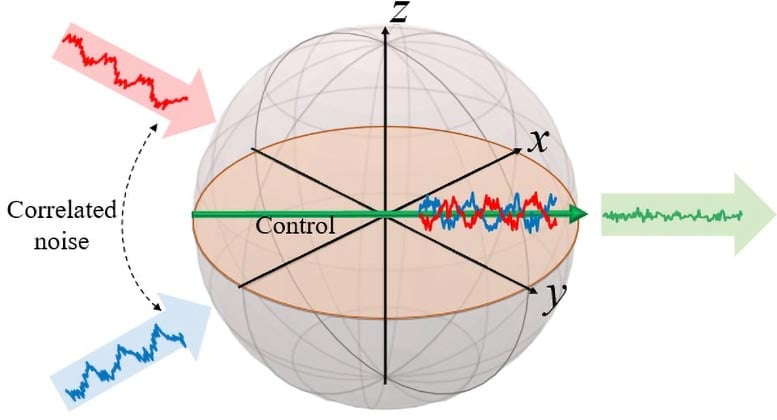
Schematic representation of destructive interference of cross-correlated noise, control sequences and experimental setup.
Detailed description (from the paper):
(a) The qubit is subjected to environmental noise δ(t). Applying a resonant drive with Rabi frequency Ω1 creates a protected dressed qubit which decoheres mainly due to ε1(t) – the amplitude noise in Ω1. Applying a second drive with modulation frequency eΩ1, Rabi frequency Ω2 and amplitude fluctuations ε2(t), reduces decoherence due to ε1(t).
(b) If the cross-correlation, c, of ε1(t) and ε2(t) is nonzero, a detuning eΩ1 = Ω1 + c Ω2 2/Ω1 tilts the effective-drive axis and induces a destructive interference of the cross-correlated noise, resulting in a doubly-dressed qubit with a longer coherence time.
(c) Measurement sequences for standard and correlated double drive (DD) protocols. (d) Experimental setup and level
scheme of the NV center
Credit: The authors
Key achievements of this new strategy include:
Tenfold Increase in Coherence Time: The duration for which quantum information remains intact is extended ten times longer compared to previous methods.
Improved Control Fidelity: Enhanced precision in manipulating quantum systems leads to more accurate and reliable operations.
Superior Sensitivity: The ability to detect high-frequency signals surpasses the current state-of-the-art, enabling new applications in quantum sensing.
Alon Salhov, said, “Our innovative approach extends our toolbox for protecting quantum systems from noise. By focusing on the interplay between multiple noise sources, we’ve unlocked unprecedented levels of performance, bringing us closer to the practical implementation of quantum technologies.”
This advancement not only marks a significant leap in the field of quantum research but also holds promise for a wide range of applications. Industries that rely on highly sensitive measurements, such as healthcare, stand to benefit enormously from these improvements.
Reference: “Protecting Quantum Information via Destructive Interference of Correlated Noise” by Alon Salhov, Qingyun Cao, Jianming Cai, Alex Retzker, Fedor Jelezko and Genko Genov, 30 May 2024, Physical Review Letters.
DOI: 10.1103/PhysRevLett.132.223601


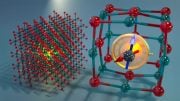
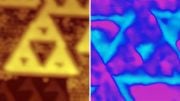
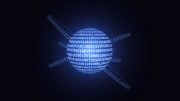
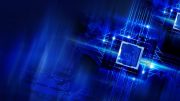
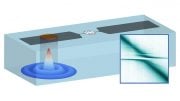
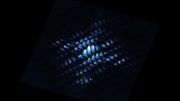
This innovative strategy addresses key challenges in quantum systems, offering a tenfold increase in stability and paving the way for more reliable and versatile quantum devices.
Quantum Technology Breakthrough
Very Good!
Please ask researchers to think deeply:
1. What exactly is quantum?
2. Is what you are exploring necessarily quantum?
3. What is the physical reality of quantum?
and so on.
The fundamental theories of physics today have long been misled by Physical Review Lettersz (PRL). In scientific research, exaggeration and fraud are rampant. Please witness the exemplary collaboration between theoretical physicists and experimentalists (https://zhuanlan.zhihu.com/p/701032654).
The Physical Review Letters firmly believes that two sets of high-dimensional spacetime objects (such as two sets of cobalt-60) can rotate in reverse and form two objects that mirror each other. Is it a reputable scientific journal? Is it still scientific?
Science and pseudoscience are not determined by a publication (such as the journal Nature, Physical Review Letters, et al.), an organization or a person, nor by you or me, but by mathematics the final say. Scientific research guided by correct theories can help humanity avoid detours, failures, and pomposity.
All we can see about quantum tech is it’s golden cryogenic system pics! No one speaks nothing about the electronic parts technology! The papers about the molecular levels are keeping in a completely mystery! This lead we belief that is all fake from the Big Techs!